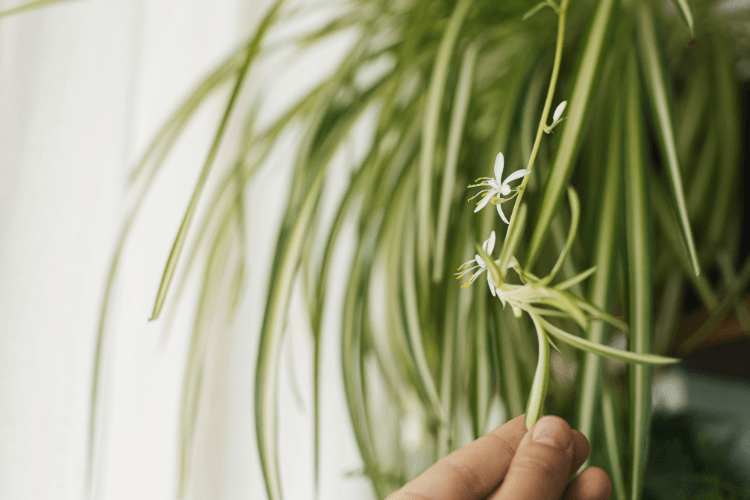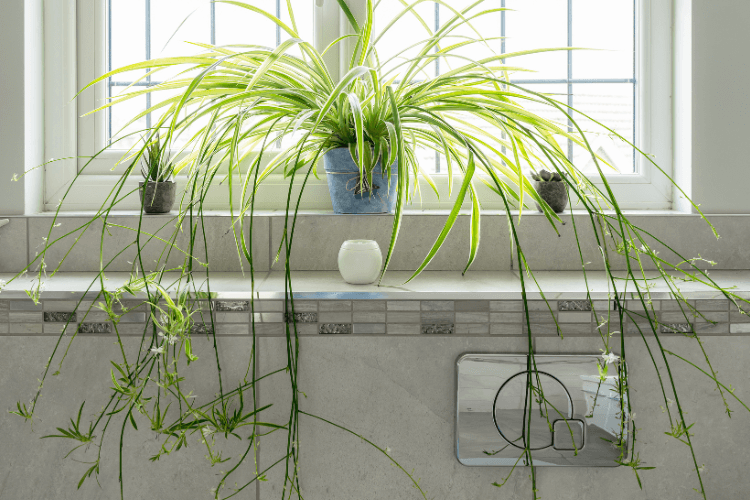Have you ever marveled at a flourishing spider plant bursting with delicate white blooms, only to wonder why your own plant never seems to show off its floral side? You’re not alone. Many plant enthusiasts, whether seasoned or just starting out, feel puzzled when their spider plants fail to bloom. This isn’t merely a cosmetic concern—it’s your plant’s way of signaling that its environment and care might need a little fine-tuning. In this guide, you’ll learn everything you need to know about encouraging your spider plant to bloom. From understanding the flowering process to practical fixes, we’ve got you covered with expert advice, clear step-by-step solutions, and proactive tips for long-term success.
Table of Contents
Do Spider Plants Bloom? Understanding the Flowering Process

Spider plants, scientifically known as Chlorophytum comosum, are celebrated for their cascading foliage and ease of care. But did you know that these resilient plants can produce charming little flowers? Yes, spider plant blooms are indeed possible, though they may seem rare indoors. The small, star-shaped white flowers often emerge on long arching stems, creating a delicate contrast against the green leaves.
- Key Point:
Your spider plant does bloom when conditions are ideal. However, flowering is typically tied to factors such as plant maturity, seasonal shifts, and optimal care practices.
By understanding that spider plants require specific environmental cues to flower, you can adjust your routine to help coax those elusive blooms.
Factors That Affect Spider Plant Blooming

To unlock the secret to spider plant bloom, you need to pay attention to several critical aspects of plant care. Below are the key factors that influence whether your spider plant will reward you with flowers.
Light Requirements for a Blooming Spider Plant
- Bright, Indirect Light:
Spider plants thrive best under bright, indirect sunlight. While direct sun might seem beneficial, it can scorch the leaves and hinder blooming. Instead, aim for a spot near a window where light is diffused. - Do Spider Plants Need Sun?
They do require natural light, but too much direct exposure can lead to leaf burn. Your goal is to meet the spider plant light requirements without overwhelming the plant. - Actionable Tips:
- Position your plant near an east or north-facing window.
- Use sheer curtains to filter the sunlight if needed.
Watering and Moisture Needs
- Balanced Watering:
Both overwatering and underwatering can impede blooming. Consistency is crucial. - How Often to Water Spider Plant:
Generally, watering every 5–7 days in warm conditions and every 10–14 days in cooler periods works best. Always check the top inch of soil before watering. - Signs to Watch For:
- Overwatering may lead to yellow leaves or root rot.
- Underwatering can cause leaves to become dry and brittle.
The Role of Proper Soil and Repotting
- Spider Plant Soil:
Use a well-draining potting mix, ideally amended with perlite or sand. This ensures that the roots aren’t waterlogged while retaining sufficient moisture. - Repotting Spider Plant:
When your plant becomes root bound, repotting is essential. A slightly larger container with fresh soil provides the roots room to expand, improving nutrient uptake and overall plant vigor.
Nutrients and Fertilization for Flowering
- Fertilization Needs:
To encourage blooming, a balanced fertilizer with a higher phosphorus content can be beneficial. Phosphorus supports flower formation, unlike nitrogen, which encourages leafy growth. - Feeding Schedule:
- Fertilize during the growing season (spring and summer) about once a month.
- Avoid over-fertilizing, which can lead to nutrient burn and may even suppress blooming.
How to Encourage Your Spider Plant to Bloom
Now that you understand the main factors influencing blooming, here’s how you can put that knowledge into action. Follow these step-by-step strategies to encourage your spider plant to flower.
Step 1: Optimize Light Exposure
- Ensure Adequate Indirect Light:
Place your spider plant where it can get plenty of bright, indirect sunlight. Consider moving it closer to a well-lit window if needed. - Supplemental Lighting:
If natural light is insufficient, especially during winter months, use a grow light set on a timer to mimic natural conditions.
Step 2: Perfect Your Watering Routine
- Check Soil Moisture:
Before watering, stick your finger into the soil. Water only when the top inch feels dry. - Use the Right Water:
Filtered or distilled water can prevent harmful chemical buildup that might hinder blooming. - Establish a Consistent Schedule:
Adjust the frequency according to seasonal changes—more frequent in summer, less in winter.
Step 3: Use Quality Soil and Repot When Needed
- Fresh, Well-Draining Mix:
Ensure your potting soil is designed for houseplants with excellent drainage. - Regular Repotting:
Repot every 1–2 years to refresh the soil and give roots room to grow. This promotes a healthier plant and can boost flowering.
Step 4: Fertilize to Encourage Flowering
- Select a Phosphorus-Rich Fertilizer:
Phosphorus is key for flower development. Use a balanced fertilizer but opt for one with a slightly higher phosphorus ratio. - Follow a Feeding Schedule:
Feed your plant once a month during the active growing season. Reduce feeding during the dormant period.
Step 5: Mimic Natural Seasonal Changes
- Cooler Winter Periods:
A slight drop in temperature during winter can signal your spider plant to prepare for blooming in spring. - Adjust Light and Water Accordingly:
As the seasons change, monitor your plant’s needs and adjust its light exposure and watering schedule.
Common Issues Preventing Spider Plant Flowers
Even when you follow the best practices, sometimes your spider plant might not bloom. Understanding common issues can help you troubleshoot.
Why Isn’t My Spider Plant Blooming?
- Insufficient Light:
Without enough indirect sunlight, your plant may focus on survival rather than flowering. - Over-Fertilization:
Excessive nitrogen can lead to lush foliage at the expense of flowers. - Watering Inconsistencies:
Both overwatering and underwatering stress the plant, preventing it from flowering. - Root Bound Conditions:
A crowded root system can limit nutrient absorption, stunting flower development.
Managing Spider Plant Brown Tips and Yellow Leaves
- Monitor Your Plant’s Overall Health:
Brown tips or yellow leaves can indicate stress, which might be diverting energy away from blooming. - Fixing the Issue:
- Adjust watering practices.
- Improve soil drainage and quality.
- Ensure optimal light conditions.
- Regular Pruning:
Remove damaged parts to encourage healthy new growth and potential flowering.
DIY Fertilizer Recipe for Encouraging Spider Plant Blooms
For those who enjoy a hands-on approach, here’s a simple DIY fertilizer recipe to support blooming. This table outlines the ingredients and steps for making your own natural fertilizer:
| Ingredient | Amount | Purpose |
|---|---|---|
| Bone meal (rich in phosphorus) | 2 tablespoons | Boosts flower formation |
| Epsom salt (magnesium sulfate) | 1 tablespoon | Enhances nutrient absorption |
| Compost tea | 1 cup | Provides balanced nutrients |
| Water | 1 gallon | Dilutes the mixture for safe use |
Instructions:
- In a large container, combine the bone meal and Epsom salt.
- Pour in the compost tea and mix thoroughly.
- Add water gradually while stirring until well blended.
- Use this fertilizer once a month during the spring and summer months to encourage flowering.
Spider Plant Blooming FAQs
Q1: How often does a spider plant bloom?
A: Healthy spider plants may bloom once or twice a year, though this can vary based on care and environmental conditions.
Q2: Do spider plants need a lot of sun to bloom?
A: They need bright, indirect light—not harsh, direct sun. Too much direct sunlight can harm the leaves and prevent blooming.
Q3: Can I force my spider plant to bloom?
A: While you can’t force nature, optimizing light, watering, soil quality, and fertilization will encourage your plant to bloom naturally.
Q4: What are the signs that my spider plant is ready to bloom?
A: Look for mature, healthy foliage and the formation of long, arching stems, which often precede flower formation.
Q5: Will a blooming spider plant produce seeds?
A: Yes, although propagation through plantlets is more common and easier than growing from seeds.
Conclusion: Enjoy the Beauty of Your Blooming Spider Plant
Now that you have a comprehensive guide on Spider Plant Bloom: How to Encourage Flowers Easily, you’re ready to transform your indoor garden. By optimizing light, maintaining a balanced watering routine, using quality soil, and carefully managing fertilization, you can encourage your spider plant to produce its beautiful, delicate flowers.
Remember, every spider plant is unique. As you adjust your care routine, keep an eye on your plant’s signals—its leaves, growth patterns, and even the occasional offshoot can tell you if it’s ready to bloom. With patience and consistent care, you’ll soon enjoy the delightful sight of spider plant blooms gracing your home.
Call to Action
Are you ready to see your spider plant burst into bloom?
- Share your journey: Tell us about your experiences in the comments below.
- Subscribe now: Join our newsletter for more expert plant care tips, exclusive guides, and special offers.
- Connect with us: Follow our social media channels for daily inspiration and advice from fellow plant enthusiasts.
Take action today—review your spider plant care routine, make those small adjustments, and get ready to revel in the natural beauty of your blooming spider plant. Your indoor garden awaits its moment of glory!
By following these expert strategies, you’re well on your way to encouraging a lush, vibrant display of flowers on your spider plant. Embrace the process, learn from your plant’s signals, and enjoy the remarkable transformation that comes with the right care. Happy planting!

